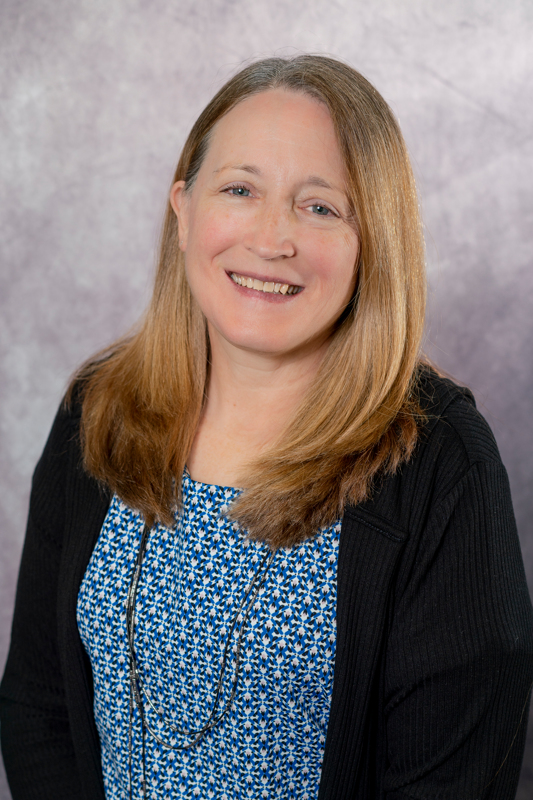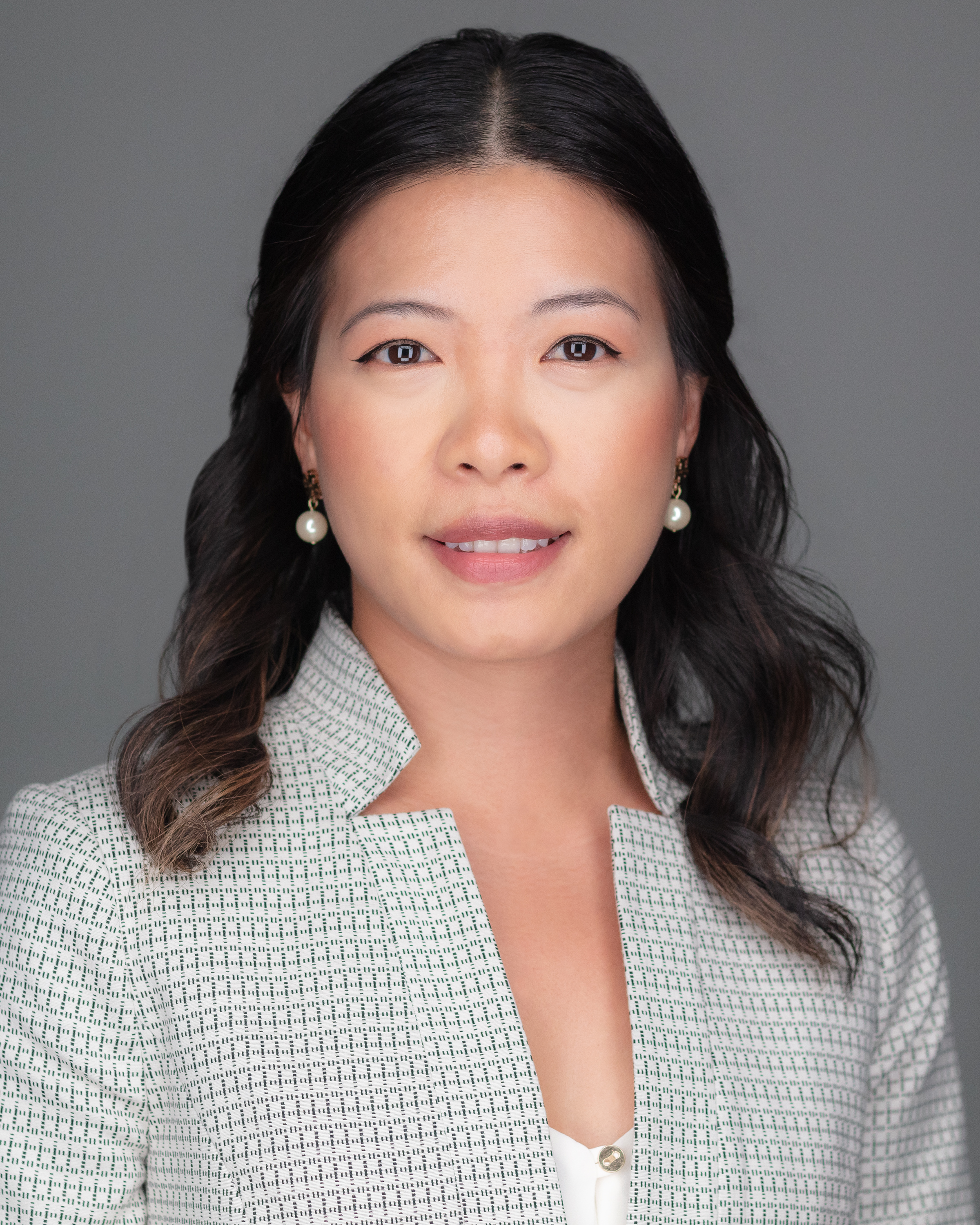What Advanced Practitioners Need to Know About Follicular Lymphoma: Diagnosis and Treatment
Module 3: Case Studies in Relapsed/Refractory Follicular Lymphoma (Part 1)
Susan Woodward, MSN, APRN, AOCNP®, Zanrha Esteban, MPA, PA-C, and Amy Sidorski, MS, ANP-C, review the case studies of two women and two men, ranging in age from 38 to 83 years old, all patients with relapsed/refractory follicular lymphoma.
Chair

Susan Woodward
MSN, APRN, AOCNP®
Moffitt Cancer Center
Faculty

Zanrha Esteban
MPA, PA-C
Moffitt Cancer Center

Amy Sidorski
MS, ANP-C
Rocky Mountain Cancer Centers
Transcript
Susan Woodward: Welcome to JADPRO's roundtable discussion on follicular lymphoma. My name is Susan Woodward and I'm back with my colleagues Zanrha Esteban and Amy Sidorski. Zanrha and Amy, thank you for joining me again today.
In our previous discussions, we talked about the diagnosis in frontline treatment of follicular lymphoma as well as treatment options for relapsed/refractory follicular lymphoma. Now, I'd like us to get into our case studies.
Amy Sidorski: Okay, so to circle back to JC, she's a 38-year-old female with no significant past medical history who was diagnosed with stage IIIA, low-grade follicular lymphoma in July of 2018 when she presented with diffuse lymphadenopathy. At that time, even though she was young, she had a preference not to receive chemotherapy and received 4 weekly doses of rituximab followed by 4 doses of maintenance rituximab, which resulted in a complete remission.
In June of 2021, she presented with some abdominal discomfort. A CT (computed tomography) of the chest, abdomen, and pelvis at that time showed diffuse lymphadenopathy and moderate splenomegaly with a conglomerate of mesenteric lymph nodes measuring up to 14 centimeters. She elected to monitor until January of 2022 because she felt like the pain was tolerable. A PET CT at that time again showed diffuse lymphadenopathy and splenomegaly measuring up to 20 centimeters. The maximal SUV (standardized uptake values) of the mesenteric conglomerate was 9.1. The others had an SUV between 5 and 8.
At that time, we had discussed a biopsy of the mesenteric conglomerate to exclude transformation, but she was declining the biopsy. And then again was declining chemoimmunotherapy and preferred a treatment that would minimize immunosuppression during the COVID-19 pandemic, so she did not really want to go back to the anti-CD20 monoclonal antibody. So in February of 2022, she initiated treatment with tazemetostat, which resulted in stable disease with modest reductions in the size of some of the lymph nodes and in her spleen. Prior to starting the tazemetostat, we attempted to obtain an EZH2 mutation status, but we did have some difficulty in receiving insurance approval, so she elected to go ahead and start treatment without knowing the status.
In February of 2023, she elected to discontinue the tazemetostat and try alternative therapies. However, she unfortunately had some side effects from those therapies and elected to discontinue.
Then in March of 2023, she did agree to receive treatment with mosunetuzumab. She developed grade 1 CRS (cytokine release syndrome)with cycle 1, days 1 and 15. We were able to manage that as an outpatient and she did just fine. An interim PET CT showed a Deauville 1CR and she has gone on to complete 8 cycles with an end of treatment PET CT scan pending at this time. Of note, she did develop shingles about 3 months into therapy, so we did treat her with antivirals and then kept her on prophylactic antivirals through her treatment.
Susan Woodward: So, I wanted to ask a couple questions about this patient. She's very interesting because she's young and really wanted to avoid chemotherapy, but you bring up the issue of treating our patients during the COVID pandemic. We all remember how challenging it was. Particularly, I felt like our patients were probably the most vulnerable patients of anyone that we had to deal with.
So how did that COVID pandemic affect treatment conversations and patient decision-making for you during that time? Did you decide to hold off on starting some people on therapies or did some people just not come to the office and stop treatments or ask to have treatments postponed or…?
Amy Sidorski: Sure. I think we did try to put off treatment for patients that we could if we were going to give them a CD20 monoclonal antibody and the risk of the COVID infection causing more problems for them. But for some patients who needed treatment, some of them were willing to take the risk. Other ones we may have gone with less immunosuppressive therapies. It was kind of a discussion that we had with the providers and the patients to kind of let them know, "Look, this risk is here and it's real." And just important also to make sure that if they develop any COVID-like symptoms that they're testing and calling us immediately so we can get them on treatment with Paxlovid now. In the beginning, we didn't always have that.
Susan Woodward: Right or we had different monoclonal antibodies. I believe our use of IVIG (intravenous immunoglobulin) certainly went up during that period, as we'd learned new things every day, we were just trying to do anything that we could to keep people healthy.
Amy Sidorski: Yes absolutely.
Susan Woodward: Yes. And then when you had the conversation with this patient about starting mosunetuzumab, especially since she had just kind of come off of doing alternative therapies and whatnot, was she receptive initially or was that hard to get her to agree to that therapy?
Amy Sidorski: No, she was pretty receptive. She does a lot of research and is pretty involved in her care and so had seen the good outcomes with mosunetuzumab and we talked to her about, we've given this, we have a clinical trial looking at sub-Q mosunetuzumab with some patients with B-cell malignancies and patients have done really well with it. So we talk to her that it's manageable as an outpatient.
She's got young kids, so she doesn't really want to spend a lot of time in a hospital setting, and so she was pretty on board with it. It didn't really take a whole lot of convincing.
Susan Woodward: Okay. Again, once your PET results, if she has stable disease or partial response, do you think she'd be agreeable to going on for the additional treatment through cycle 17?
Amy Sidorski: I think so, as long as she was tolerating it okay. If she developed some type of side effects or recurrent infections or something, she might've elected to stop early.
Susan Woodward: Well, she's probably keeping her fingers crossed for that 8 cycles and done, right?
Amy Sidorski: Yes, exactly.
Susan Woodward: Okay. So I wanted to ask, both of you Zanrha and Amy, I know we're in little bit different situations with Zanrha and I being at a tertiary cancer center, academic center, and then Amy's experience is more in the community. What experiences have you had with any mosunetuzumab patients who've ended up in outside hospitals?
Amy Sidorski: So we generally give patients, of course, the on-call clinic number. They also have our physician's personal cell phone number to call. We do tell them if they develop a fever that they need to be calling us because we need to be calling the ER before they go over to make them aware that the patients have received this drug.
Of course, we do want to rule out infection with any fever, but we also want to make sure that the treating doctors in the emergency room are aware that CRS is a real possibility here and make sure that they have tocilizumab if needed.
Susan Woodward: Okay. Zanrha, anything you wanted to share?
Zanrha Esteban: No. In regard to most, a lot of the patients that I've seen are on trial. They come from everywhere and they drive quite a long way, but when they're on trial, they usually are monitored like they're admitted, so they're monitored for CRS, but sometimes once they do go home or go to a local place where they were lodging, they can develop CRS. So we have a patient hotline that they call. They know side effects like fevers or anything, new pain, they know to call us, and we always have somebody on staff to answer our patient hotline. If they meet that criteria to come in, we have an urgent care that's open 24/7 and we are able to administer tocilizumab or dexamethasone.
Susan Woodward: Great. So we have actually a couple of clinical pearls that Amy's prepared if you can review that for us.
Amy Sidorski: Yes, I think as far as the CRS rate, just to review, we discussed this in part two, but in case you didn't tune into that, the CRS rate is relatively low grade with 39-44% of any grade CRS. Only 2.5% were grade 3 or 4 CRS. So again, the majority is grade 1 and 2. CRS is most likely to occur in cycle 1. Neurotoxicity of any grade did occur in 30% of patients with only 3% of grade 3 events, and ICANs occurred in only 1% of patients. We do educate patients when we're going to start them on mosunetuzumab about the risk of CRS. According to the ASTCT (American Society for Transplantation and Cellular Therapy) guidelines, in order for a patient to have CRS, they have to have a fever, so a temperature greater than a 100.4.
I do ask my patients if it's within their means to also purchase a pulse oximeter and a blood pressure cuff. A lot of our patients sometimes already have it on hand, and I just tell them, "If you can call me with a fever and tell me that your blood pressure and your O2 saturation are adequate, then that will save you an ER visit. But if you call me with a fever and I don't know what those values are, then we're going to have to send you into the emergency room."
And then just making sure the on-call providers are aware if we've given mosunetuzumab and the risk of CRS. We talked about letting the emergency room providers know. Then the other thing just to make patients aware is the increased risk of infection while on treatment. Especially, we've seen some prolonged COVID with these patients or they have COVID, we think things are pretty much better and we give another dose and then they have a relapse of their COVID symptoms. So, we've become kind of strict with our patients if they develop COVID that they need to be 100% symptom-free before we're going to restart the mosunetuzumab for them.
Susan Woodward: Yes, I would agree. I think we've seen that same thing and had to implement those same restrictions. You know people have gotten a little bit lax about COVID or saying, "Okay, it's just COVID now. I feel okay," but you really do have to make sure that all the symptoms are completely resolved, because you do see that rebound and they test positive for months and months.
Amy Sidorski: Absolutely, yes.
Susan Woodward: Again, considering checking their IgG levels and seeing whether that might be someone who's a candidate for IVIG. Some of these people have had so many prior treatments that that's going to be a chronic issue for them.
Amy Sidorski: Yes, that's a great point.
Susan Woodward: So did you want to discuss case study two?
Amy Sidorski: Sure. So, MS is an 83-year-old female who was diagnosed with stage IV follicular lymphoma in 2009 involving the lumbar spine, small intestine, sternum, lung, and supraclavicular regions. Her past medical history is significant for chronic MAI (Mycobacterium avium intracellulare) infection that thankfully has never required treatment. She did develop cardiomyopathy with an AICD (automatic implantable cardioverter defibrillator) placement in 2022 following a COVID infection.
Her initial treatment with R-CHOP (rituximab, cyclophosphamide, doxorubicin, vincristine, and prednisone) for 6 cycles led to complete remission. She was then lost to follow-up and presented in 2020 after a fall with a head injury and was found to have a new 2.6 centimeter mass-like area of enhancement involving the posterior right nasopharynx.
Needle biopsy of the mass in February of '21 confirmed follicular lymphoma grade 1/2. PET CT scan showed the right nasopharyngeal mass, a 1.5 centimeter left nasopharyngeal mass with an SUV of 5, uptake in the left temporalis muscle with an SUV of 9.7, hypermetabolism along a soft tissue density next to the left zygomatic bone and a focus of activity in the left face abutting the left maxillary sinus as well as increased uptake in the sternum and manubrium.
She was symptomatic from the right nasopharyngeal mass, so treatment was recommended. In March of '21, she initiated treatment with R2. Lenalidomide, unfortunately, was discontinued in July of '21 during cycle 5 due to recurrent rash. She was then hospitalized for the cardiomyopathy from COVID-19 in October of 2021 that resulted in the AICD placement.
She was lost to follow-up until February of '22 when she had an outside PET CT that showed that she was still in remission. However, in March of '22, she presented with nasal congestion. She had seen ENT 6 to 8 weeks prior with a negative scope, but CT in March was showing a new left nasopharyngeal mass.
An excisional biopsy was performed and was positive for recurrent follicular lymphoma. There was some initial discussion among the pathologists about whether or not it had transformed, but they did come to a consensus that this was follicular. In May of 2022, she initiated treatment with tazemetostat. EZH2 mutation testing was discussed with her, but ultimately we did not send it prior to initiating treatment. A PET CT scan after 3 months on treatment in August of '22 showed Deauville 1CR and most recent CT scans from this past August also show a continued remission for her.
Susan Woodward: Okay, that's great. So have you thought ahead to what options you might consider if in the future she relapses? Is this somebody that we could consider for bispecific antibody treatment, thinking about some of her comorbid conditions?
Amy Sidorski: Yes, I think she's doing okay right now. We probably would have her cardiologist weigh in if we needed to in the future. We could consider a bispecific for her or maybe just anti-CD20 monoclonal antibody therapy alone.
Susan Woodward: Okay. Yes, we've had many patients in their 80s treated with bispecifics as well as CAR-T and have actually done well, but you do have to do appropriate patient selection and making sure the patient is of course agreeable to doing that. But yes, we've had very good tolerance of the bispecific antibodies with patients that are elderly and/or frail.
This brings us to the end of this part of the discussion. For more information and to view our other discussions on follicular lymphoma, please visit JADPRO online at jadpro.com.

